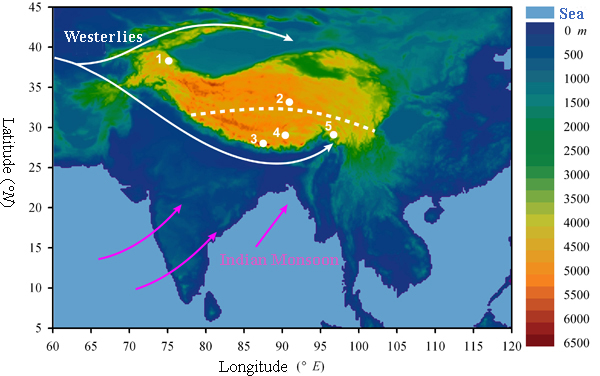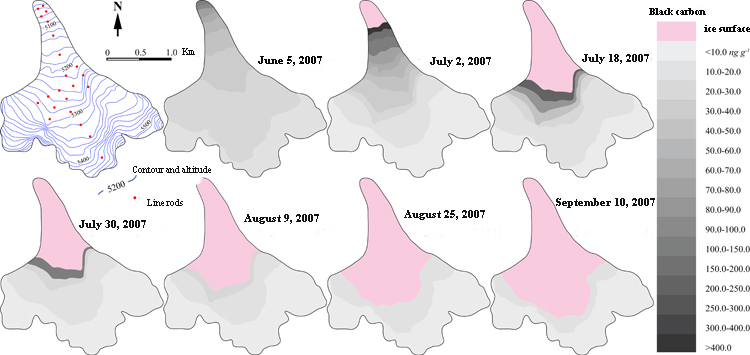| News |
| Latest news | |
| Int’l Cooperation activities | |
| Events & Announcement | |
| Recent Activities |
| Location: Home>News>Recent Activities |
| Black carbon research on the Tibetan Plateau reported by PNAS |
|
Prof. Baiqing Xu of the Institute of Tibetan Plateau Research (ITP) has recently published the paper, ‘Black soot and the survival of Tibetan glaciers’, on the world top journal Proceedings of National Academy of Sciences (PNAS). In collaboration with colleagues from the With the increasing concern in the influence of aerosols emission on climate and environment worldwide, their study made a successful stab at the understanding of black carbon composite in the tropical
Location of the five ice core drilling sites for black carbon study on the Tibetan Plateau
Spatial distribution of black carbon over the Gangrigabu Glacier, southeast Tibetan Plateau, and its variation with time
|


